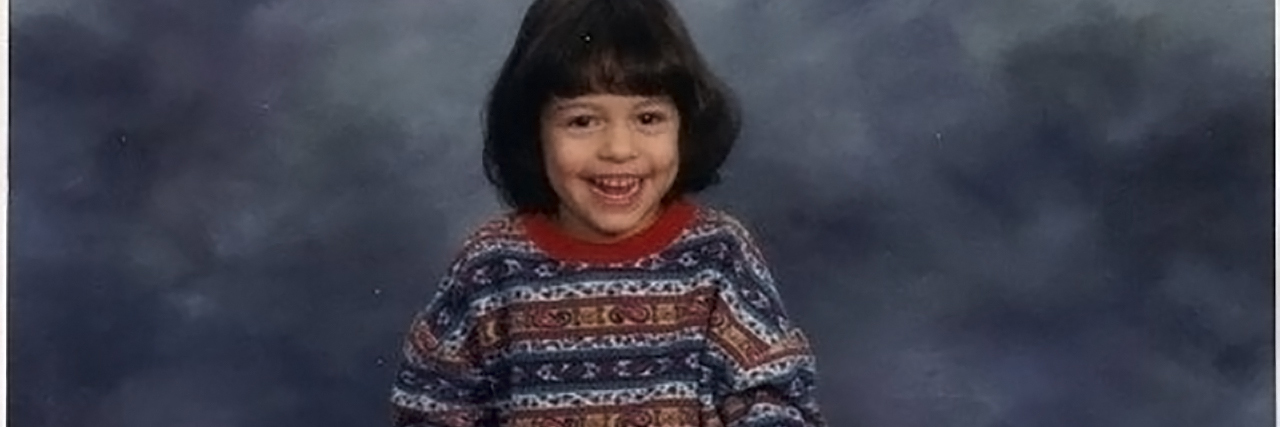As School Begins, Please Teach Your Children About Disabilities
As summer begins to come to an end and students began to prepare for a new school year, I would like to remind others of how important it is to teach children about disabilities, about differences. I hope by sharing some of my personal story, people will realize how important this is.
I was born with cerebral palsy, low tone, and ataxia due to lack of oxygen at birth. I was the first child to ever enter my elementary school with a physical disability. The school worked hard to adapt things to meet my unique needs while I was a student there. When I first started school, I didn’t really see myself as different from my classmates. In kindergarten and first grade, I would try my best to do everything other children would do, with a little help from my one-on-one aide. A lot of my classmates liked playing with me and also helping me.
It was shortly after my 8th birthday party in the 2nd grade when I noticed how different I was. A little girl I thought was my friend wouldn’t let me play with her anymore because I was different, because I had a disability she couldn’t understand. She began to see my disability as a disease, believing she could catch it. She became my first bully. Unfortunately, more of my classmates began following her lead. Because of one child’s thoughts, suddenly my disability became contagious in other children’s eyes. I was bullied verbally and physically. Some of my classmates even treated and talked to me like a baby.
Some of my classmates asked my teachers if I knew how to read, if I could learn like them, if I got the same kind of homework they got. My teachers would answer their questions and tell my classmates I was just as smart as them. I was often excluded from a social life throughout my elementary and middle school years. Through the bullying and misunderstanding I eventually developed self-acceptance issues, anxiety, and even had panic attacks while at school.
When I entered high school, an amazing group of older girls befriended me. Because of them I began to really love life and bring more of my personality out. These girls invited me to birthday parties, holiday parties, shopping, sleepovers, homecoming and just to hang out — things I rarely got to do in elementary and middle school. It was the one time I really felt a sense of belonging. The only time I felt complete understanding and acceptance from my peers.
Unfortunately, the summer after freshman year my family had to move states from Colorado to Alabama due to my dad’s job. At my new school I tried hard to make friends. None of these kids knew me. They didn’t grow up with me. They didn’t know how to react towards me. The first two years at my new school, I lost myself again, facing misunderstanding once again. History was repeating itself. I wanted to be a “normal” teenage girl and live a full teenage life, but because so many only saw the shell I was stuck in, I didn’t get that opportunity.
At age 16 I began sharing my life with the world through YouTube videos. After a year students at my school began to find my videos. Little by little, kids at school began talking to me. Through my videos I was able to educate my peers, which led to them to begin to understand. Awareness leads to understanding, which leads to acceptance.
I often wondered how different my childhood would have been if other children were taught about disabilities. I got that answer the last year of my schooling. I entered drama class at school during my senior year, a class I was highly nervous about. After the first day of my drama class my teacher, Mrs. Davis, talked to me privately and asked what I was nervous about. I told her I was nervous about how my classmates were going to react to my disability and my speech problems.
No other teacher had ever asked me that question. She then told me about her daughter. Her daughter has health issues, but she knows her daughter is just like any other little girl inside.
The next day my teacher took time during class to explain my disability to my classmates. This made a huge difference! This was the first time throughout my whole school life that a teacher did this. I walked into the classroom and right away I felt welcomed by my classmates. I felt like my classmates saw me before my disability. I didn’t get those weird stares or comments. Instead I received smiles and acceptance. My drama class became my favorite class, and I enjoyed performing!
Please take a few minutes to explain disabilities and differences to your child, or your students. By doing this, you can make a huge difference in another child’s life.
After all we are all different in some way. We are all beautifully and uniquely made!
Tips on how to explain a disability to a child:
– Explain that people with disabilities are like everyone else, but they might do things differently, in their own unique ways.
– Try to make it easier for children to understand by explaining the challenges people with disabilities may face in a way everyone can relate to. Just as someone needs to wear glasses to help them see, someone with a disability needs a walker to help them walk.
-Encourage children to include kids with disabilities in their activities.
– Explain that disabilities are not contagious.
We want to hear your story. Become a Mighty contributor here.
Photo by contributor.

